August was a busy month. It is usually a month to stay home, go to the beach and tend the garden, but this year we traveled. No, we did not go to Italy – we got as far as England where there are Roman ruins, but before that we went to Morgantown, West Virginia. It is a place of some architectural gems.
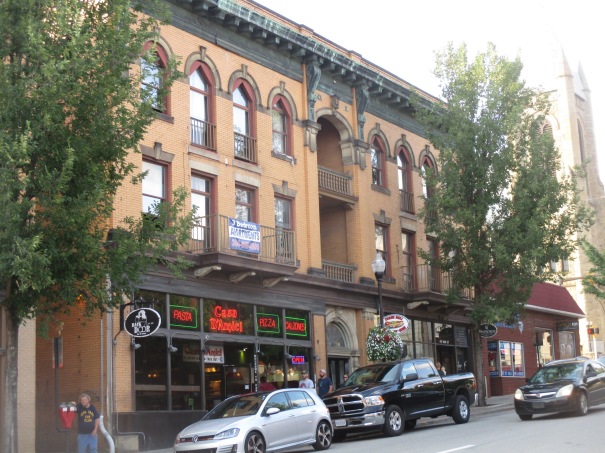
I am from Morgantown and lived there the first nineteen years of my life. There was an Italian community there, although except for the older Italians who had emigrated from various parts of Italy in the early 20th century (My father came from the Cilento region.), it seems to me that we were assimilated; we considered ourselves West Virginians.
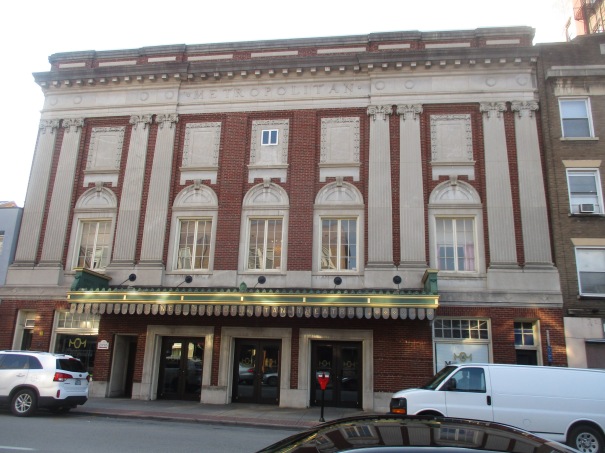
First of all, I would like to dispel any misconceptions of West Virginia. It is not a southern state. In fact – and I asked my old friends and the volunteer in the Morgantown History Museum who agree – we think that people who consider West Virginia to be a part of the south don’t know their American history. West Virginia seceded from Virginia in 1863 because it chose to remain a part of the Union, and considers itself a northern state. Nor is the culture particularly southern. West Virginia never really had a plantation economy; its industries were forestry and coal mining. These attracted protestants from Ireland in the 18th century, and later people from Wales, Eastern Europe, and Italy. This seemed to be the ethnic make-up of Morgantown when I lived there – all were proud of their heritage, but still West Virginian.

Morgantown is home of West Virginia University and once was a rather wealthy town. It boasted several glass factories — Jacqueline Kennedy chose glassware for the White House from one. There was Morgan Shirt Factory which produced Ralph Lauren, Ellen Tracy and Van Heusen apparel. There was also Sterling Faucet, which, as the name indicates, made faucets. I was saddened to learn that these industries are gone now, just memories documented in the History of Morgantown Museum.
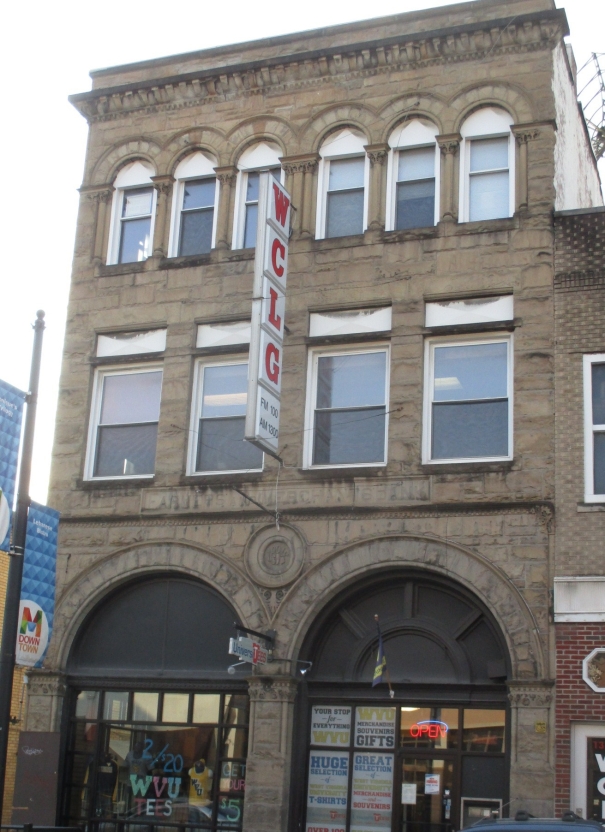
I love this building.
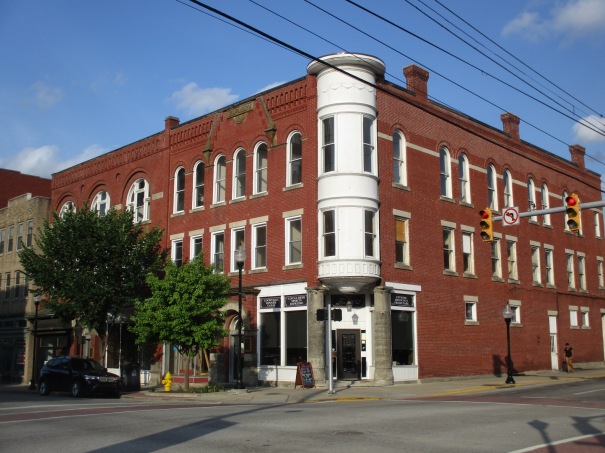
It stands on the corner of High Street and Pleasant Street and, when I was little, housed a pharmacy called Moore and Parriot. The pharmacy was owned and run by two Italian-American women, Mary Angotti and Anne DiNardo. They were friends of my mother. Mary Angotti was the pharmacist. This was in the 1940’s and ‘50’s. There have always been enterprising Italian-American women!
And, yes, Italian men worked in the coal mines. I don’t remember much coal mining in and around Morgantown when we were growing up – and I asked my friends who agreed and said that more mining was done in the southern part of the state. Nevertheless, there was some. Frank Liberatore, a friend of my father, was killed sometime in the 1940’s in a mine collapse. His widow Maria supplemented her Workmen’s Compensation by taking care of children – me included.
She taught me how to make pizza when I went to visit her one day.
“Come in,” she said. “I made pizza.” Her pizza was different from what we knew of in pizza parlors.
“But there’s no tomato sauce or cheese.” I was confused.
“Oh, this is the pizza.” She offered me a disc about six inches in diameter, with browned onion and salt. “You put whatever you want on it.”
It was delicious! When I make pizza, I always think of her. Indeed, I used this recipe when we got back to New York – to make pepperoni rolls.
Pepperoni rolls are a West Virginia-Italian invention. I had had them when I was growing up, usually from Aunt Jenny’s bakery on Walnut Street, and sometimes from Pike’s on Pleasant Street. I was a little surprised when I moved to New York that no one here had ever heard of them; then I forgot about them.
Then I found Morgantown Magazine in our hotel room. “The Pepperoni Roll, from A to Z,” an article written by Mary Wade Burnside explains that this dainty was developed in West Virginia as a lunch that coal miners could take with them down in the pits. Ms. Burnside also tells us that there is a book written about the pepperoni roll – The West Virginia Pepperoni Roll by Candace Nelson. And since the book mentions that they could be made from pizza dough, I decided to make some for my family.
I tried to make them as I remembered them with thin slices of meat rolled up in plain bread. However, the article indicates that the making of pepperoni rolls has become an art with variations and permutations according to one’s preference. You can access Morgantown Magazine and more information about pepperoni rolls at morgantownmag.com. In the meantime, here is my recipe:
Pepperoni Rolls
6 oz. thin sliced pepperoni ½ cup water
1 pack dried yeast 1 teaspoon sugar
1 teaspoon salt 1 additional cup water
2 Tablespoons olive oil 2 cups + flour
Extra flour for kneading dough

Put ½ cup warm water into a large mixing bowl. The water should be about 100ᵒ F. If it is too hot, it will kill the yeast.
Sprinkle the yeast and sugar on the water. Cover bowl and let stand for about a half hour, or until yeast begins to bubble.
Add the olive oil and salt to the yeast mixture. Then begin to add the flour, about 1 cup at a time until you have a smooth dough that forms a ball and does not stick to the surface of the bowl.
Flour your counter or table top and remove the dough from the bowl and begin to knead. You will have to knead for about 15 minutes, adding flour as necessary. When little blisters begin to form in the dough, it is ready.
Lightly grease the bottom of the bowl with a little olive oil and put the ball of dough in. Turn once to make sure both sides of the dough are oiled. Cover and let stand for about an hour.
When the dough has doubled in bulk, punch it down and let it sit for about 10 minutes.
Flour your work surface and roll the dough into a rectangle. (You can do this in batches.) Cut rolled dough into squares of about 6 inches. (or larger if you prefer)
Spread the pepperoni slices on each square and roll like a jelly roll. Tuck in the ends. Place the rolls on a greased baking sheet and let them sit for 15-30 minutes – until they have risen but are not too big and airy.
Bake at 350ᵒ F. for about 30 minutes. They are done when nicely browned and sound hollow when you tap them.
This should make about a dozen larger rolls, or two dozen smaller ones.
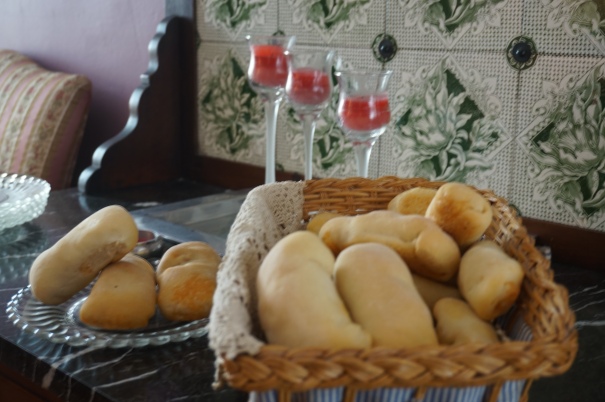
Not only did I re-discover pepperoni rolls while staying at the Hotel Morgan, we also were served a new version of the classical Manhattan – the Black Manhattan.
What does this have to do with being Italian? Well, it’s made like a traditional Manhattan, but instead of sweet vermouth, this drink calls for an amaro di Averna, the bitter liqueur from Sicily.

You can use either rye or bourbon (We used Bulleit rye), amaro di Averna and a dash or two of bitters.

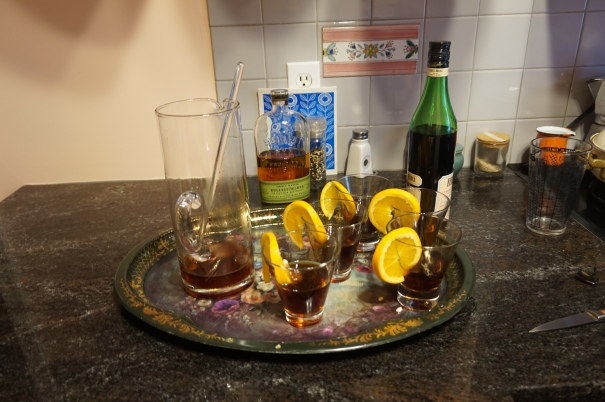
- Black Manhattans ready for a toast

Cheers! Squisito!